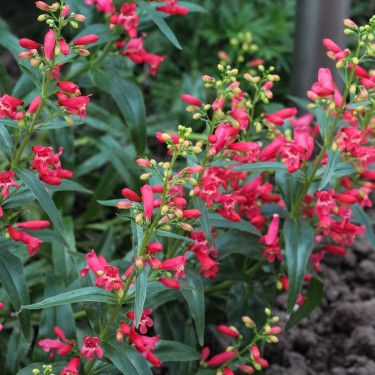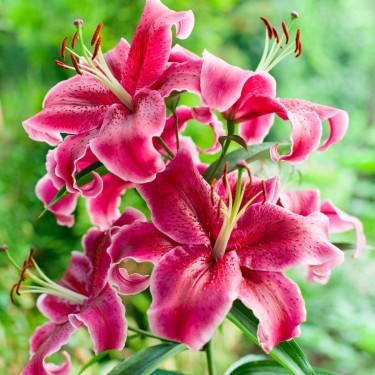Find the best sun and shade perennials recommended by regional gardening experts from Oregon to Georgia.
Every editorial product is independently selected, though we may be compensated or receive an affiliate commission if you buy something through our links. Ratings and prices are accurate and items are in stock as of time of publication.
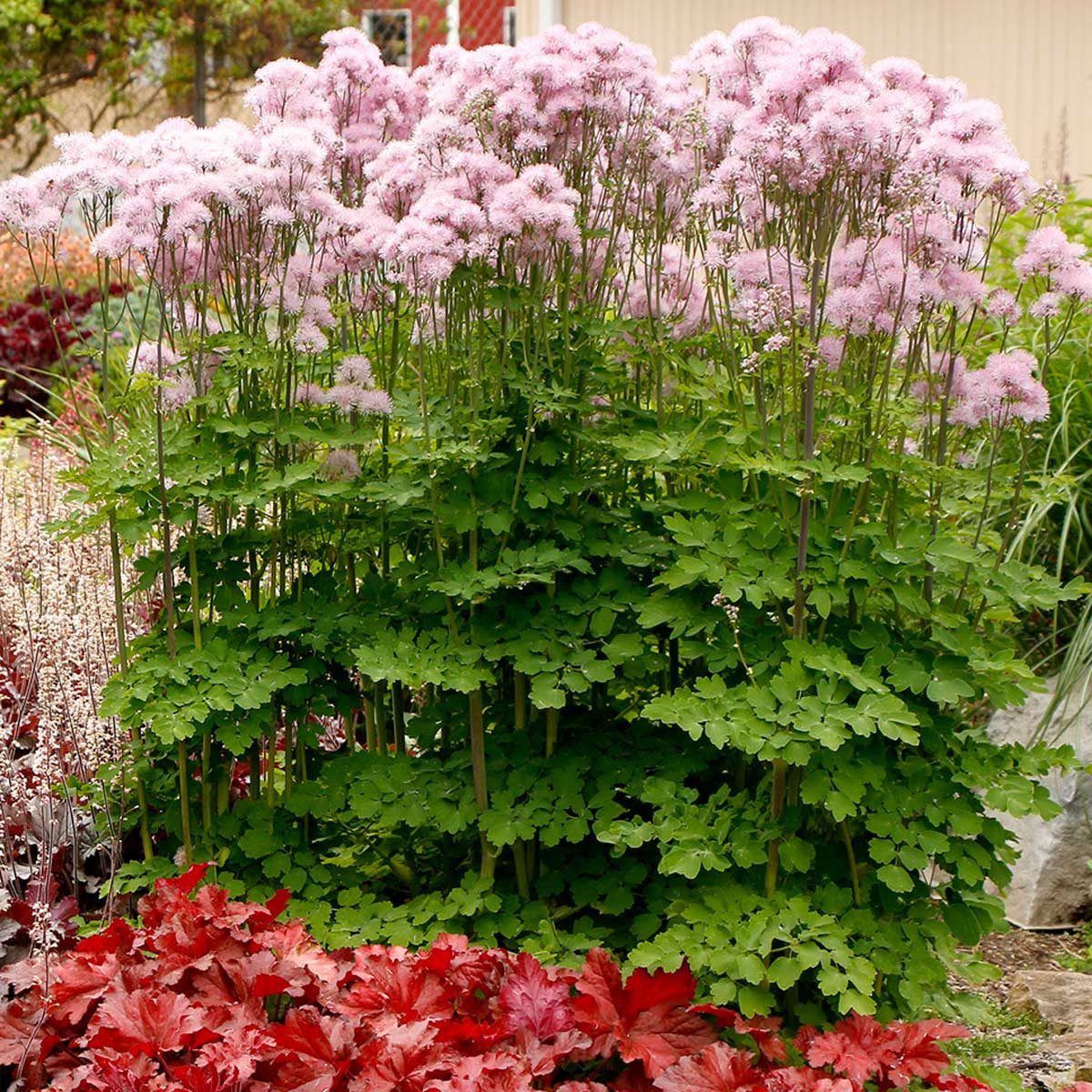
Pacific Northwest Region: Recommended Perennial for Sun
Rebecca Orr, trials coordinator at the wholesale perennial grower Terra Nova Nurseries near Portland, Oregon, recommends meadow rue (Thalictrum), an underappreciated but easy perennial well-suited to Pacific Northwest growing conditions.
“Thalictrum is an early pollen forage item for gardens, and we rarely see it without a diverse group of bee species enjoying their blossoms,” Orr says.
Meadow rue varieties can grow more than seven feet tall or just a few inches, depending on which type you plant. The variety called Nimbus Pink (pictured here), is a good in-between size that fits easily into most gardens. It stands just over two feet tall in full bloom. It is perennial in U.S. Department of Agriculture Plant Hardiness Zones 5 through 9 and works in full sun to part shade.
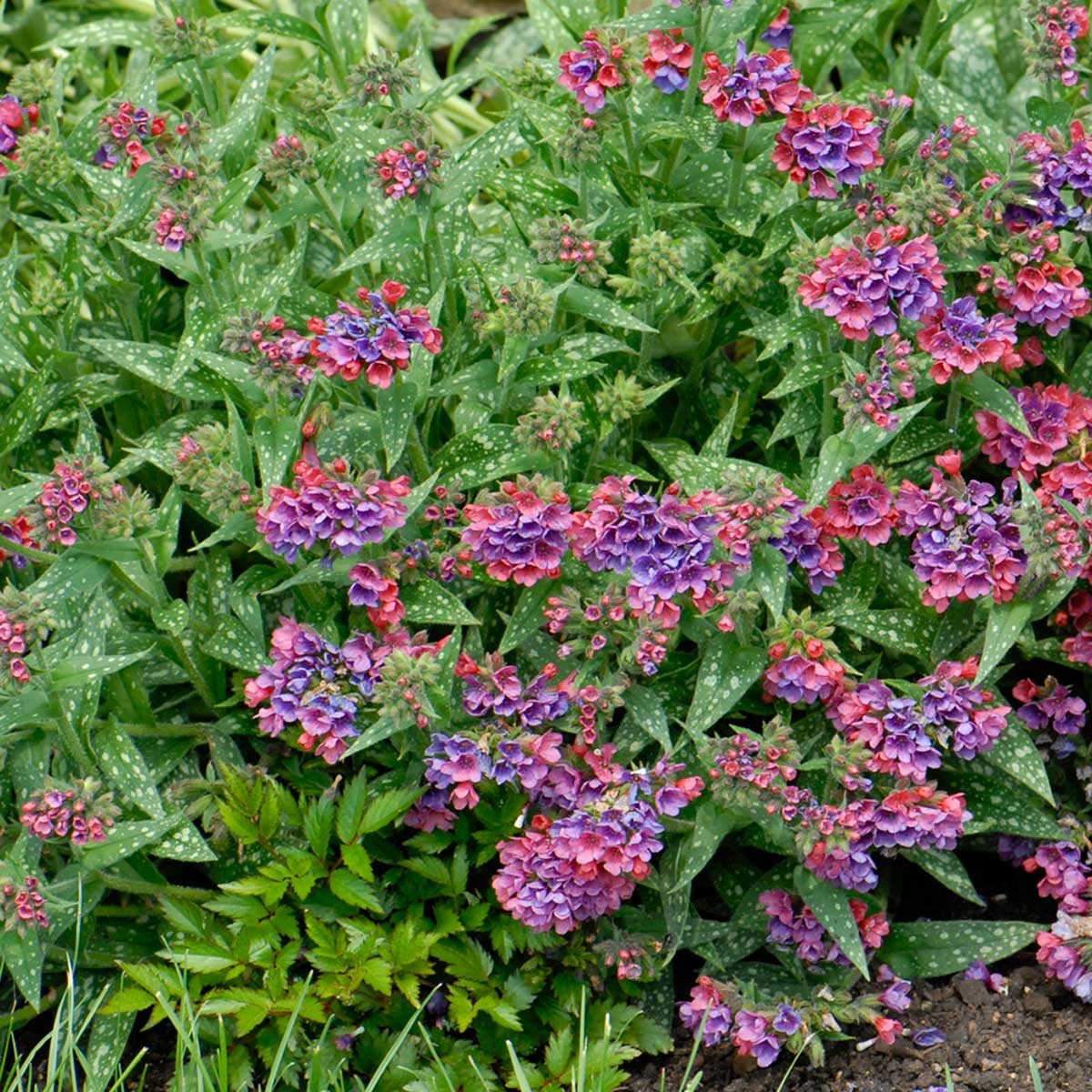
Pacific Northwest Region: Recommended Perennial for Shade
Lungwort (Pulmonaria) is a hardy perennial you’ll find in many parts of the U.S. The dry summers of the Pacific Northwest are particularly beneficial because it helps prevent powdery mildew. Its silver and green speckled foliage brightens up shade gardens all season.
“This early spring flowering perennial provides some of the first pops of color after a cold winter, bringing with it the promise of spring and a meal for our local Anna’s hummingbirds,” Orr says. “We love its tough, colorful foliage that is deer and rabbit resistant.”
Look for more disease resistant varieties of lungwort, like ‘Raspberry Splash’ (pictured here), as well as ‘Trevi Fountain’ and ‘Majeste.’ They are suitable for Zones 3 through 9 in part shade to full shade conditions.
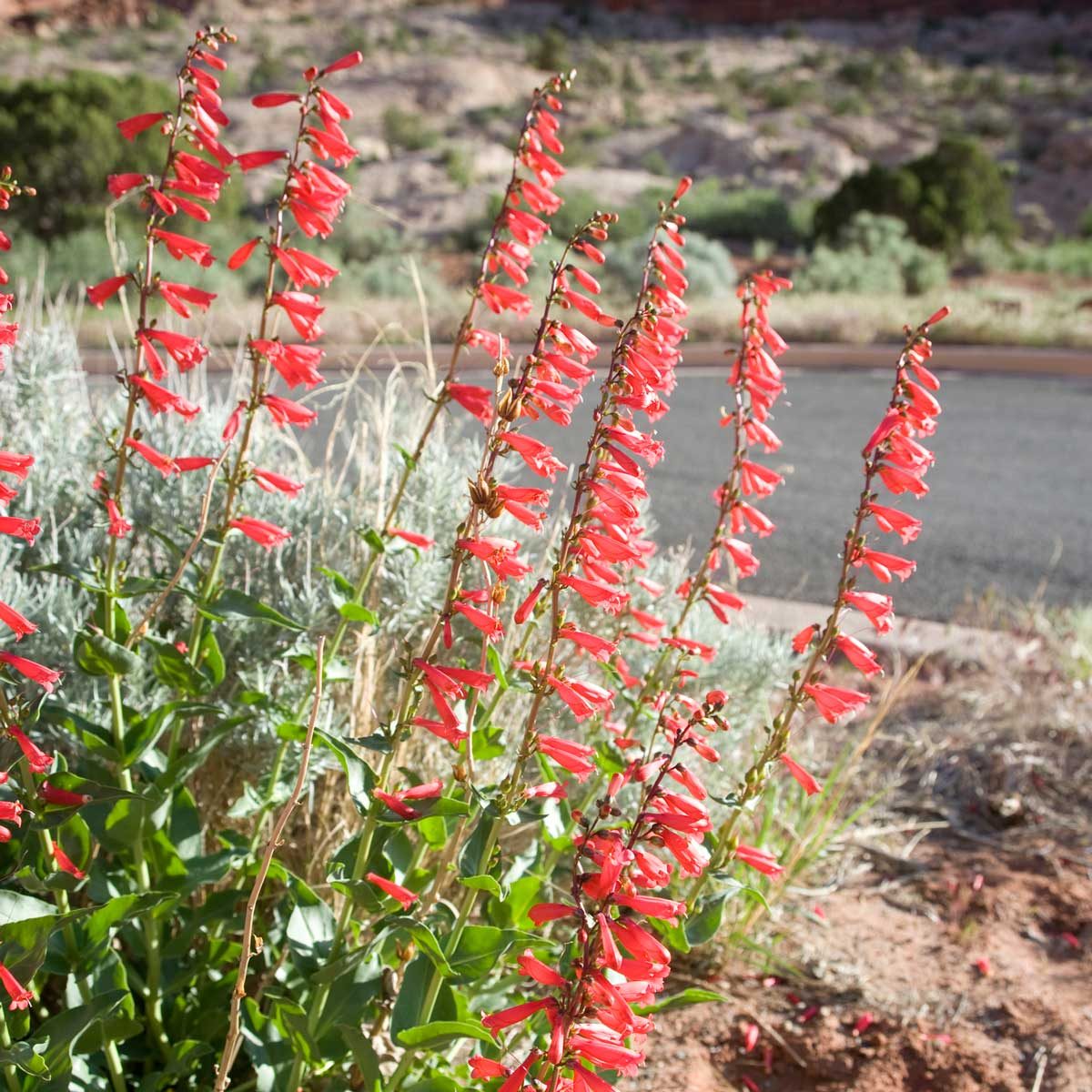
Southwest Region: Recommended Perennial for Sun
Noelle Johnson, a horticulturist, educator and landscape consultant at AZ Plant Lady in Phoenix, Arizona, recommends beardtongue (Penstemon) for sunny Southwest landscapes. This is a large class of native plants that includes herbaceous, evergreen and woody perennials. Most are endemic to arid and semi-arid parts of the Western U.S.
Because their hardiness ranges widely based on the species, do your research carefully before you buy. Penstemon eatonii, commonly known as firecracker penstemon (pictured here), enjoys full sun in Zones 4 through 8.
“While Penstemon may look rather delicate, it’s anything but,” Johnson says. “It can survive temperatures over 100 F and as low as -30 F, depending on the species. For desert dwellers like me, most bloom from late winter into spring.”
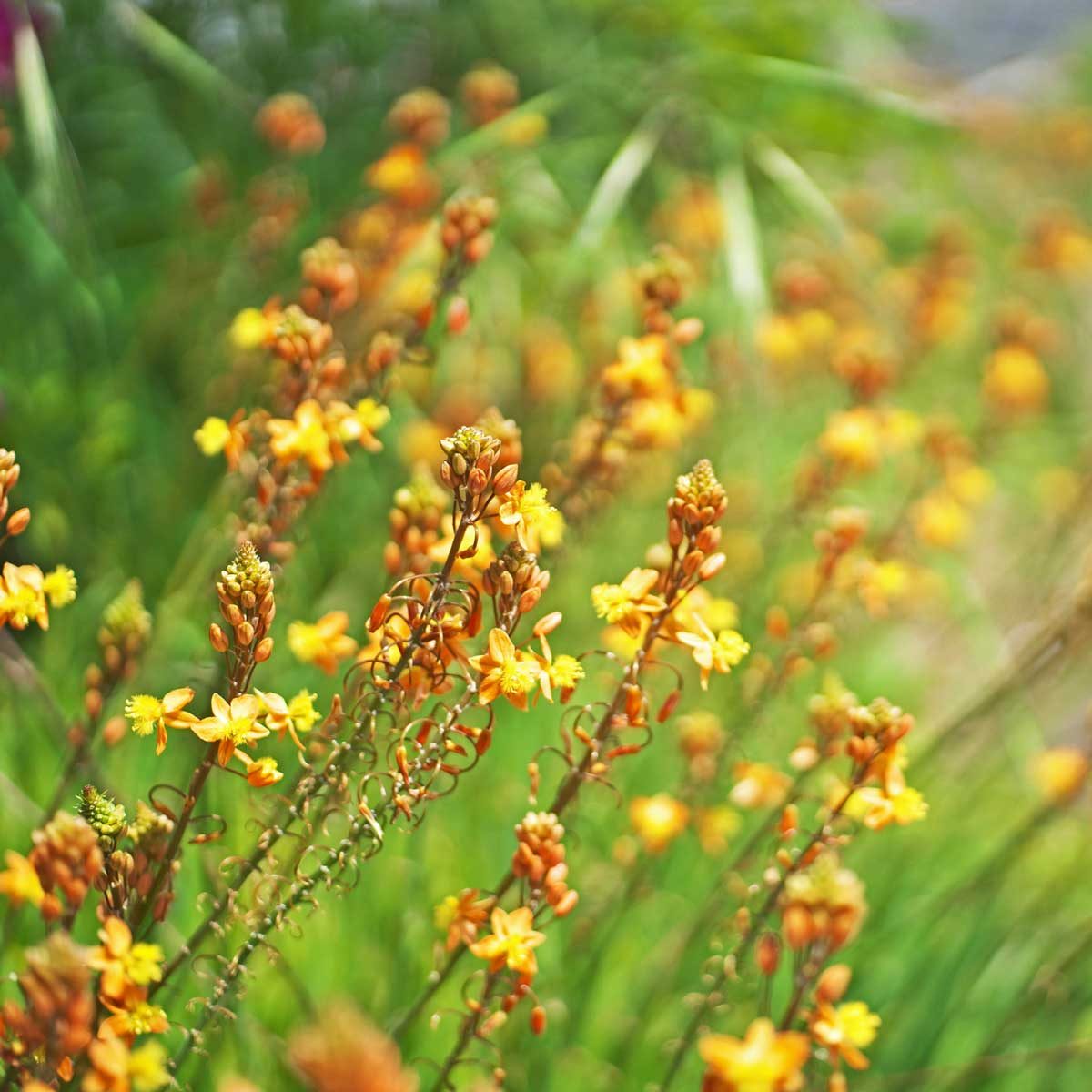
Southwest Region: Recommended Perennial for Shade
Arid climate gardeners will recognize bulbine (Bulbine frutescens) as a popular drought-tolerant perennial.
“There are few perennials that do well in the shade in the Southwest and can also handle our hot, arid climate.” Johnson says. “My favorite way to use bulbine is in the filtered shade underneath desert trees like mesquite or palo verde. Pairing it next to large rocks creates wonderful texture contrast with its succulent, grasslike foliage.”
Bulbine is a perennial in Zones 8 through 11. Fun fact: Like aloe plants, bulbine contains glycoproteins, which help ease burns, rashes and itches.
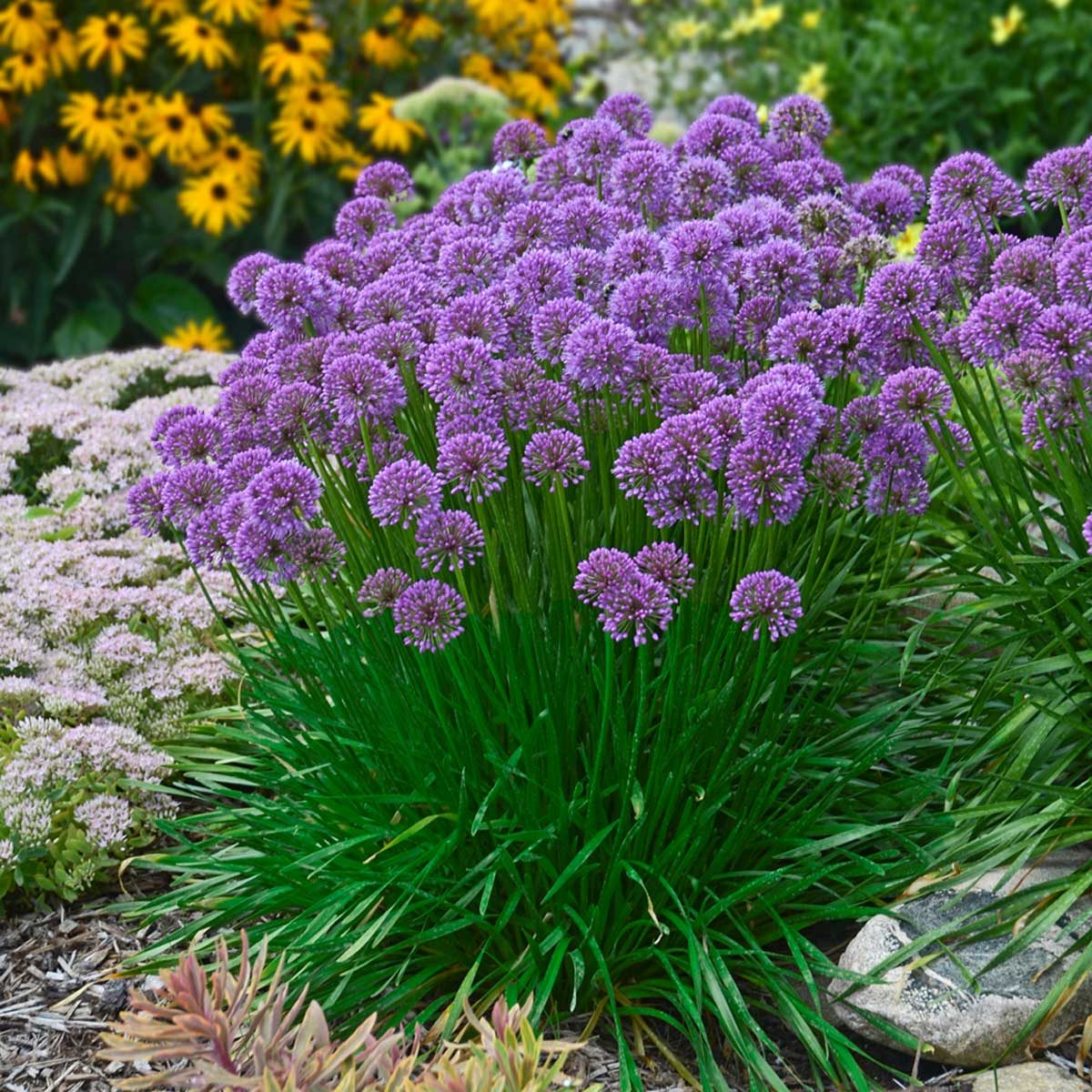
Midwest Region: Recommended Perennial for Sun
As a 21-year veteran of the perennial industry in the Midwest, I have certainly gained a few favorite hardy plants for sun and shade. One that is fun and easy to grow in a sunny garden is ‘Millenium’ ornamental onion (Allium), named 2018 Perennial Plant of the Year by the Perennial Plant Association.
Rather than growing from a fall-planted bulb, ‘Millenium’ re-sprouts from its roots like a clump of daylilies or daisies would every spring. Its glossy, emerald green foliage adds great texture to the garden before the bright purple lollipop-like flowers steal the show, from midsummer to fall. It’s easy to find pollinators enjoying its blooms on a sunny day. Grow ornamental onions in full sun to part sun in Zones 4 through 8.
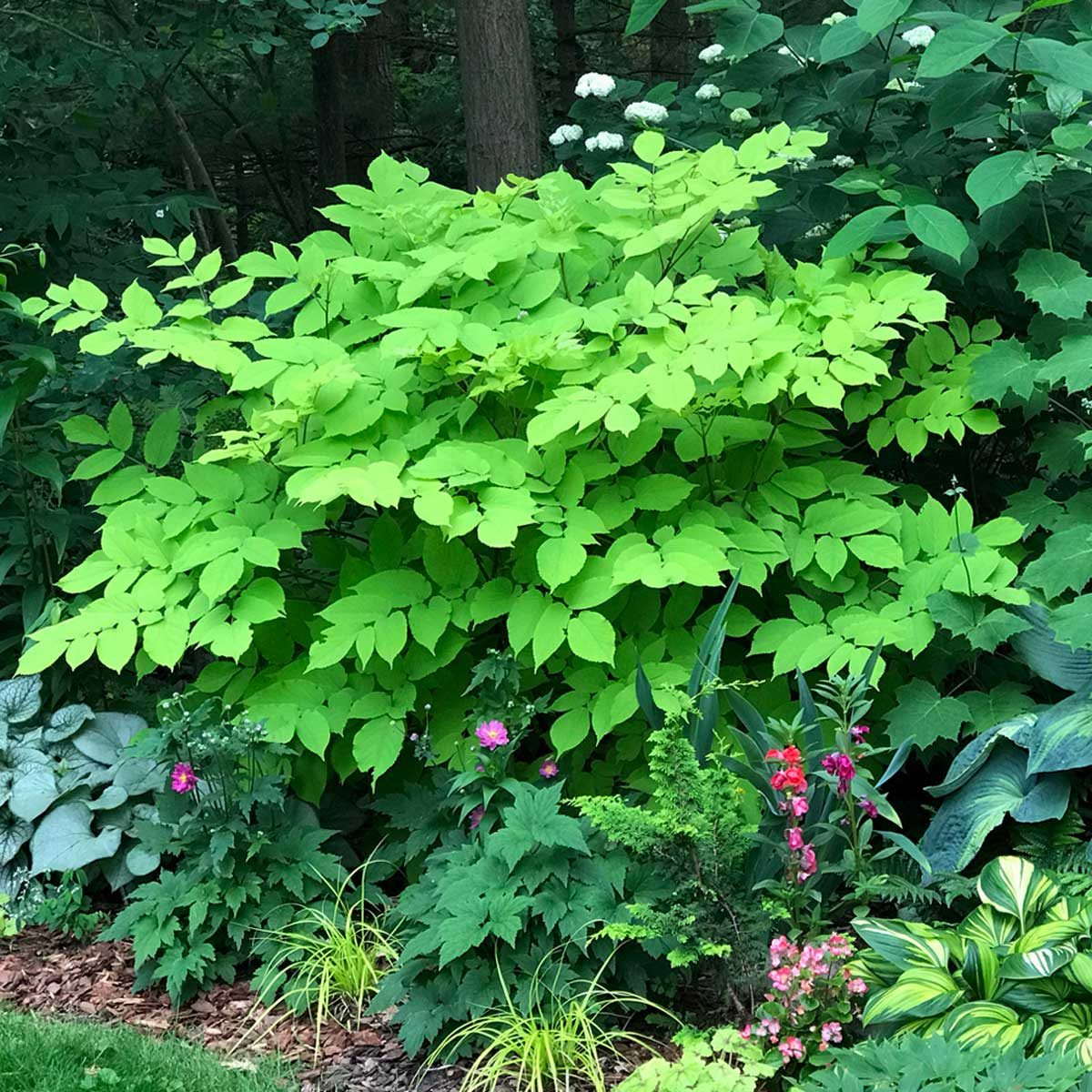
Midwest Region: Recommended Perennial for Shade
One perennial I can’t live without in my shade garden is ‘Sun King’ golden Japanese aralia (Aralia). Here it is pictured growing as a backdrop in my East-facing shade border, paired with fall-blooming Japanese anemones and other fabulous foliage plants like heartleaf Brunnera, golden sedge and hostas. Thankfully, it is one of few plants in my landscape deer and rabbits leave alone.
‘Sun King’ aralia grows in partial shade to full shade, but the plant grows larger and its foliage turns brighter yellow with at least four hours of sun. Although plant labels may say it reaches three feet tall, the one in my garden is chin-high with a six-foot spread — nearly twice the size advertised. It is hardy in Zones 3 to 9.
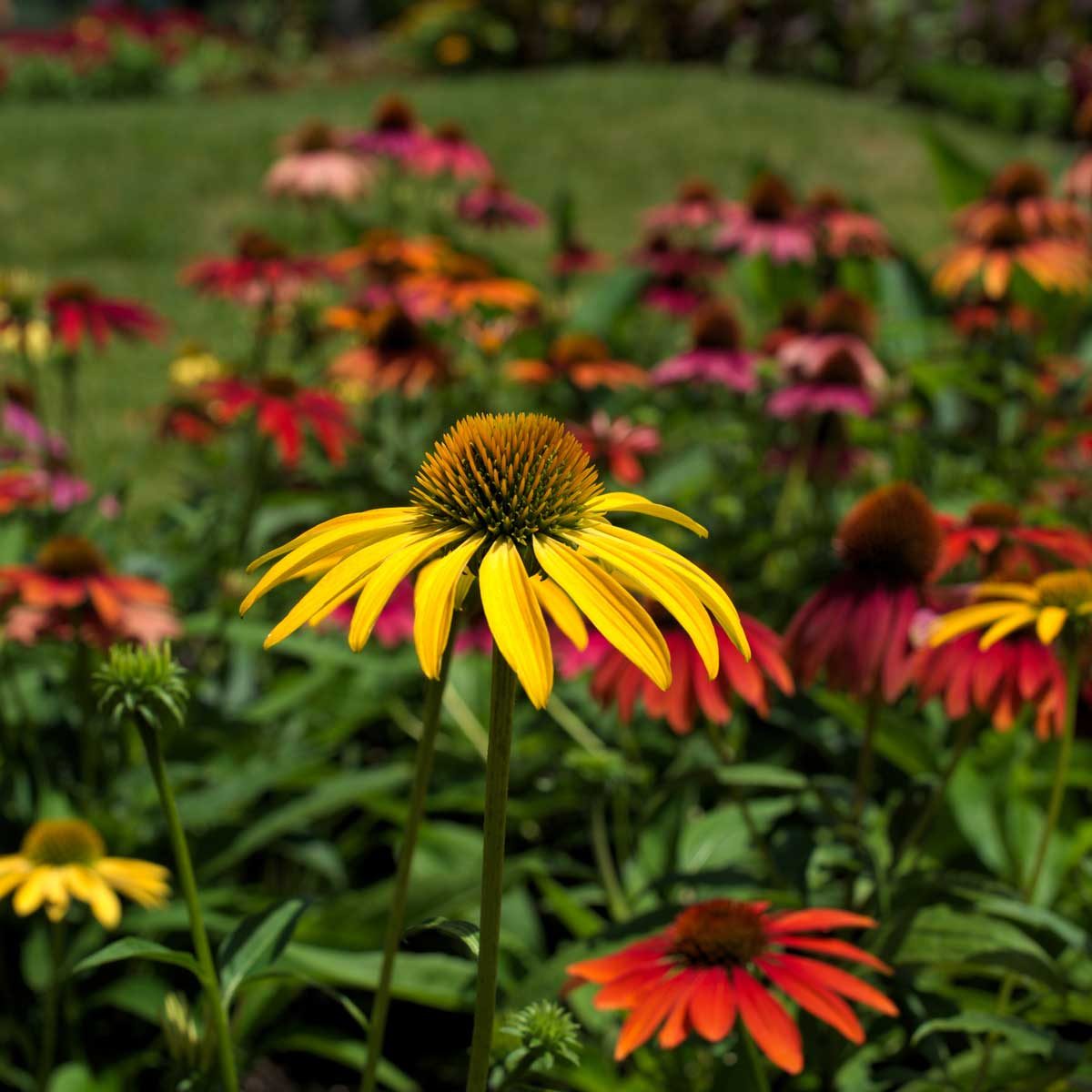
Northeast Region: Recommended Perennial for Sun
Award-winning author, educator and garden designer Kerry Ann Mendez, owner of Perennially Yours in Kennebunk, Maine, recommends single-flowered coneflowers (Echinacea) for full sun landscapes in the Northeast.
The mixed color strain ‘Cheyenne Spirit’, (pictured here) is her top pick. “It’s an exceptional perennial with great branching, blooms and hardiness,” she says.
Shopping tip: If you’d prefer your ‘Cheyenne Spirit’ coneflower to bloom a specific color, buy it when it’s blooming at the garden center. This photo shows all the potential flower colors of this seed strain.
Coneflowers grow best in Zones 4 to 9 in full sun to light shade. While nutrient-rich soil isn’t necessary, good drainage is essential. More coneflowers perish from sitting in wet soil over the winter months than from cold winter temperatures.
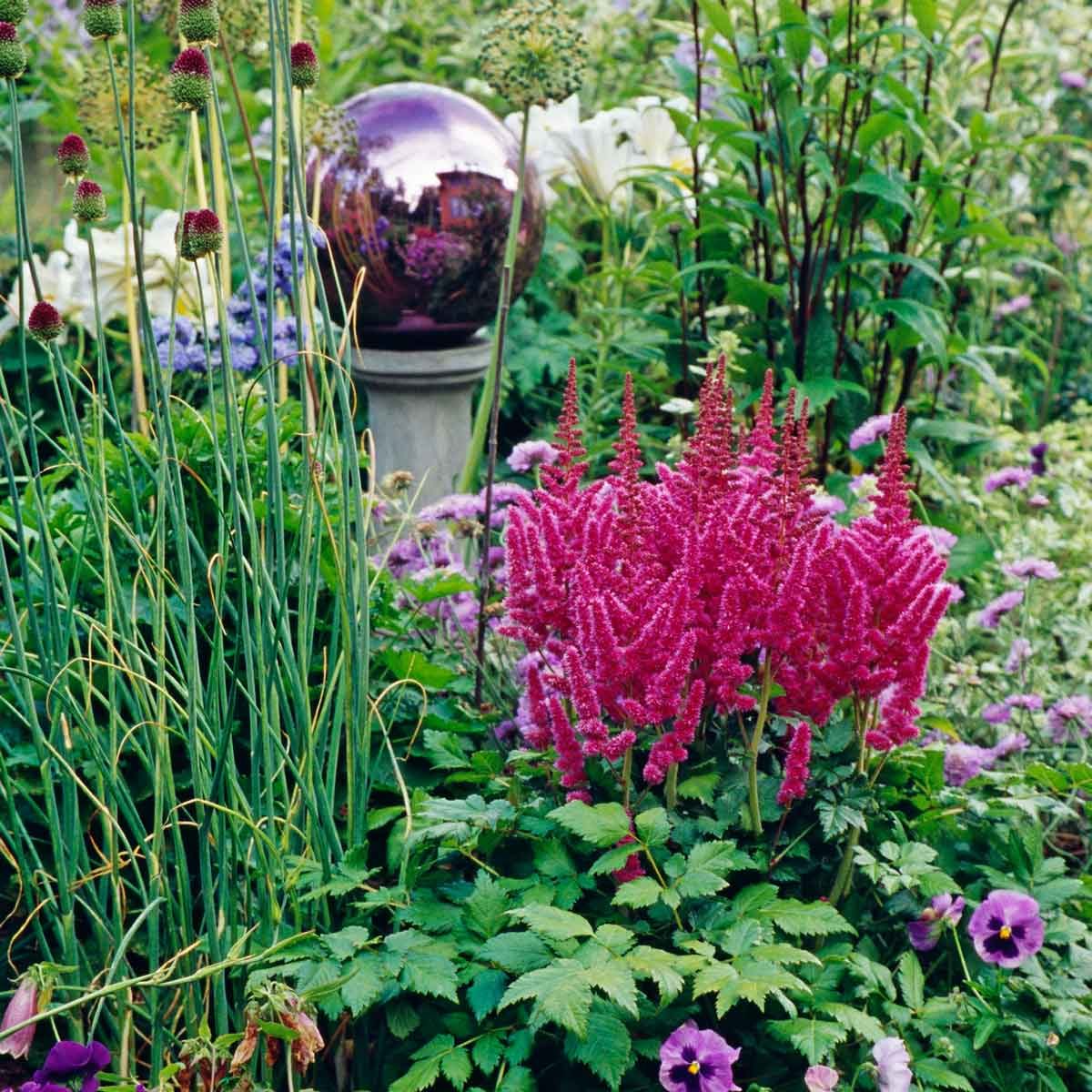
Northeast Region: Recommended Perennial for Shade
Mendez’s top pick for shade perennial in the Northeast is astilbe, specifically Chinese astilbe (Astilbe chinensis), pictured here. “All species of astilbes benefit from being grown in organically rich, moist soil, but Chinese astilbe is more forgiving if you miss a few days of watering,” Mendez says.
You’ll notice its leaves are broader and fuzzy, and its flower stems are thicker. These traits help it retain moisture better than other species. A layer of mulch or shredded leaves keeps the roots cool.
Astilbe is such a useful perennial for shade because it needs just a few hours of sun each day to bloom, and deer and rabbits typically ignore it. It tolerates clay soil and returns reliably every year in Zones 4 to 9.
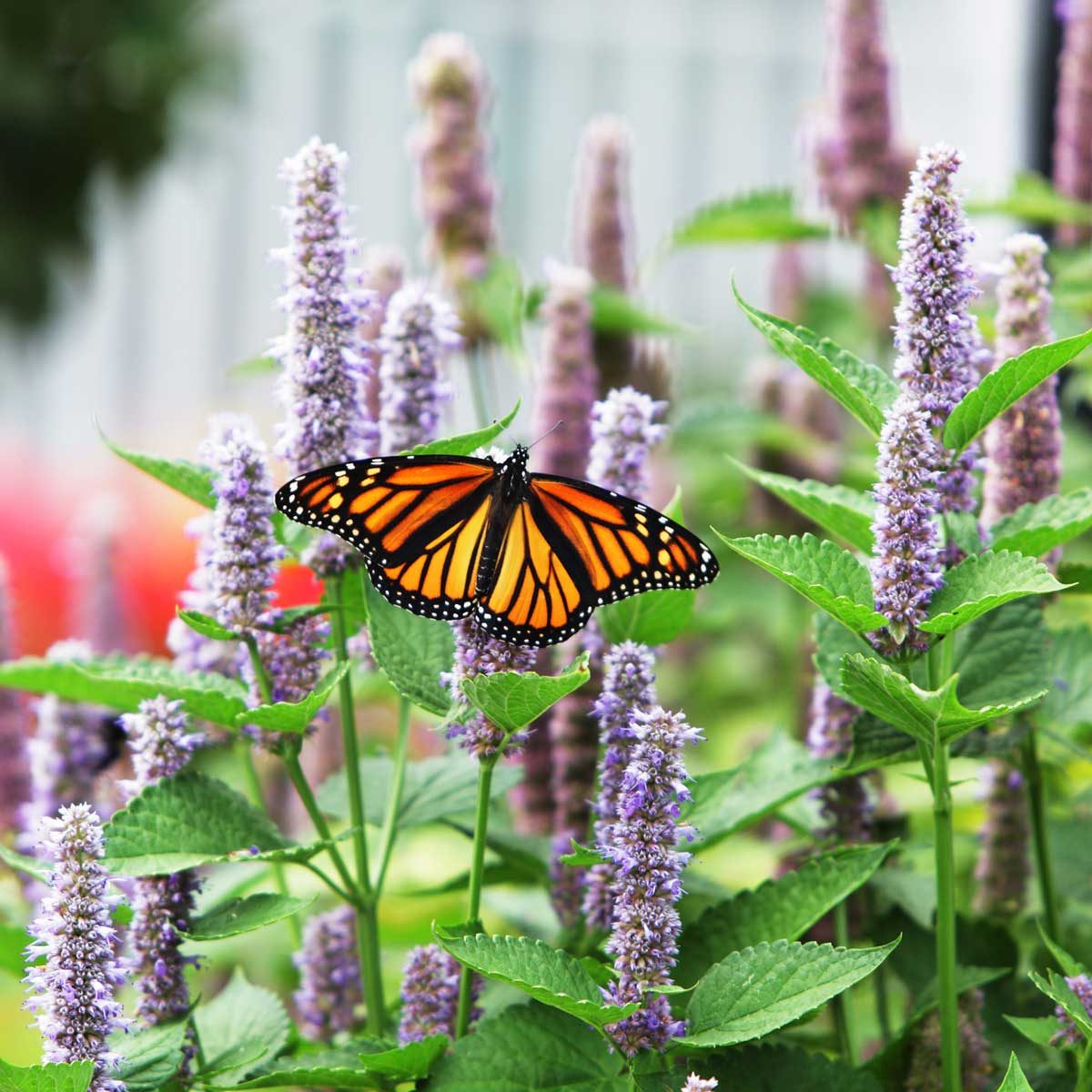
Southeast Region: Recommended Perennial for Sun
Norman Winter, AKA “The Garden Guy,” is a Southern gardening specialist who has evaluated plants in Texas, Mississippi and Coastal Georgia gardens for 30 years. He knows a good perennial when he sees one. The most durable made it into his book, Tough as Nails Flowers for the South.
One of the best sun-loving perennials he recommends for the Southeast is anise hyssop (Agastache foeniculum), which is hardy in Zones 3 through 8. Winter is an avid photographer of pollinators, and anise hyssop really draws them in. “I love them for the bees, butterflies and hummingbirds that come by frequently,” he says. “American goldfinches also enjoy its seeds that form just before you deadhead it.”
Favorite cultivars that really perform in the Southeast include ‘Blue Fortune,’ ‘Black Adder’ and ‘Blue Boa.’
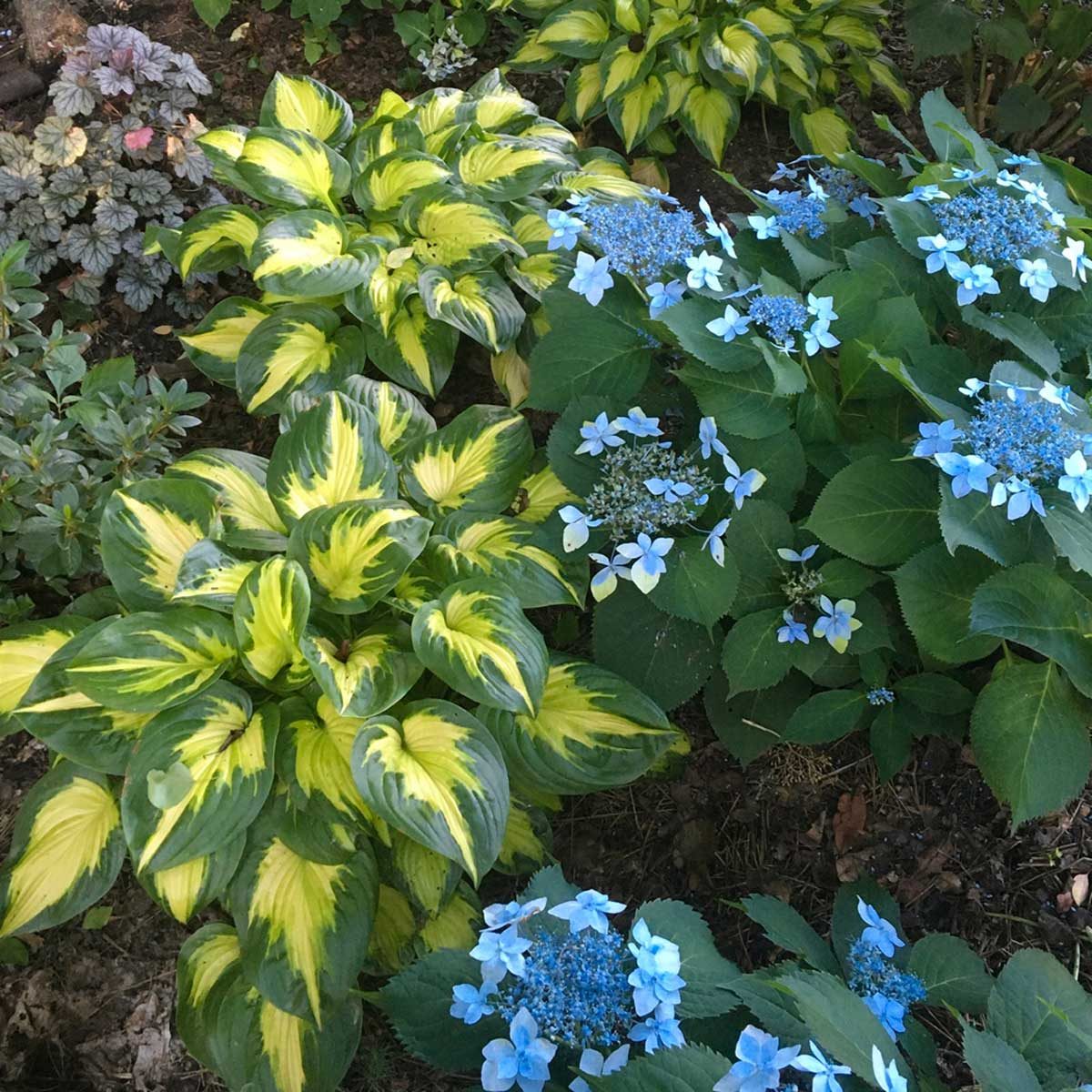
Southeast Region: Recommended Perennial for Shade
Hostas are one of the most widely grown shade perennials across North America, and Winter’s top pick for the Southeast. More than 7,000 different cultivars of hostas have been introduced, with more variation in color, variegation and size than you might imagine.
One of Winter’s current favorites is ‘Etched Glass,’ pictured here with Tuff Stuff Ah-Ha mountain hydrangeas in his Georgia landscape. You’ll find more eye-catching combinations in Winter’s book, Captivating Combinations: Color and Style in the Garden.
Winter describes hostas as “the ideal partner for hydrangeas and reblooming azaleas in the Southeast.” All thrive under a canopy of tall trees, as long as you have an irrigation system or are willing to hand-water in times of drought. They are perennial in Zones 3 to 9.

